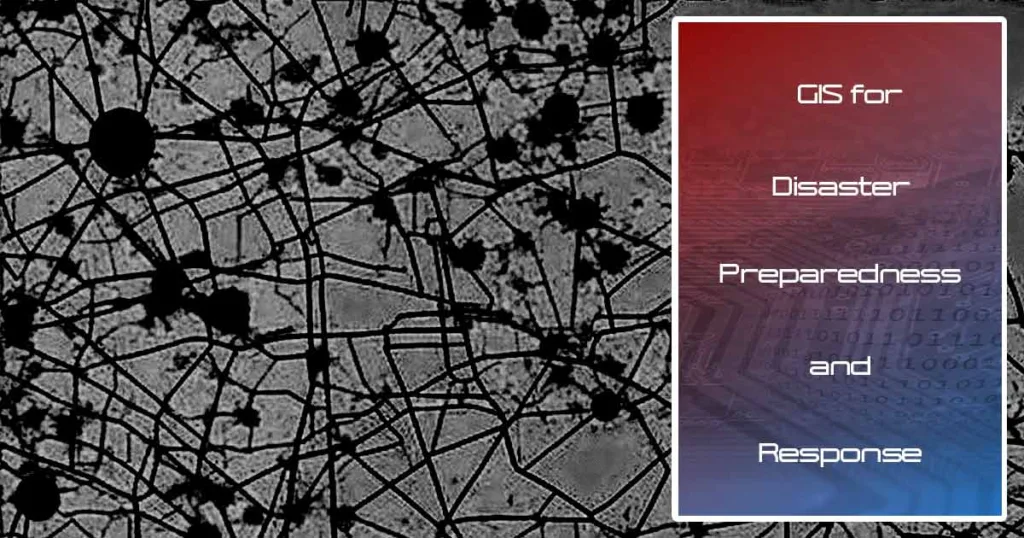In an era where disasters, both natural and man-made, strike with increasing frequency and severity, the imperative for GIS Disaster Preparedness solutions has never been more pronounced. Geographical Information Systems (GIS) stand at the forefront of this revolution, offering unparalleled insights and capabilities in enhancing disaster preparedness and response. Drawing from the recent COVID-19 pandemic, this article explores the transformative impact of GIS on public safety initiatives.
Unpacking GIS: A Beacon for Modern Disaster Management
At its core, GIS is more than just mapping technology; it’s a comprehensive platform for visualizing, analyzing, and interpreting spatial data to inform better decision-making in disaster scenarios. The integration of GIS in disaster preparedness plans enables authorities to preemptively identify potential hazards, assess vulnerabilities, and deploy resources with precision—ultimately saving lives and mitigating damage.
GIS in Action: Lessons from the COVID-19 Pandemic
The global challenge posed by COVID-19 underscored the critical role of GIS in tracking and managing pandemics. Health organizations worldwide utilized GIS to monitor infection rates, identify hotspots, and implement strategic interventions. This real-time data became instrumental in making informed decisions, from imposing lockdowns to allocating medical supplies and vaccines efficiently.
Elevating GIS Disaster Preparedness:
The potential of GIS extends beyond pandemic management to encompass a wide range of disaster scenarios:
- Predictive Analysis: By incorporating AI, GIS can forecast disaster trends, enabling preemptive actions that minimize impact.
- Enhanced Communication: GIS facilitates seamless information sharing among emergency responders, ensuring coordinated efforts during crises.
- Community Safety: Publicly accessible GIS platforms empower communities with knowledge, allowing individuals to understand their risks and take appropriate precautions.
GIS Disaster Preparedness: A Strategic Blueprint
Adopting GIS in disaster preparedness involves several key steps:
- Investment in Training: Equipping emergency management personnel with the skills to utilize GIS technology effectively.
- Data Integration: Harnessing diverse data sources, including satellite imagery and ground sensors, for comprehensive spatial analysis.
- Collaborative Networks: Establishing partnerships among governments, NGOs, and international bodies to share GIS data and best practices.
- Public Engagement: Utilizing GIS to inform and involve communities in disaster preparedness efforts.
Join the GIS Disaster Preparedness Revolution for a Safer Tomorrow
The journey toward advanced disaster preparedness is both urgent and necessary. GIS technology offers a beacon of hope, providing the tools and insights needed to navigate the complexities of modern disasters.
Engage with Grab The Axe for Expert GIS Solutions
At Grab The Axe, we specialize in leveraging GIS for disaster preparedness, offering expert consultations and tailored solutions to meet your needs. Whether you’re looking to enhance your organization’s emergency response plan or seeking advice on GIS integration, our team is here to guide you.
Take the Next Step Towards Enhanced Preparedness
Don’t wait for the next disaster to strike. Partner with Grab The Axe today and harness the power of GIS Disaster Preparedness for a safer tomorrow. Subscribe to our insights, follow us on social media, and stay ahead of the curve in disaster management and preparedness.
Together, we can build resilient communities equipped to face any challenge. Contact Grab The Axe now to explore how GIS can transform your disaster preparedness strategy.
References:
Esri. (No Date). GIS Systems Lead Response to COVID-19. Retrieved from https://www.esri.com
Utah’s Automated Geographic Reference Center. (No Date). The Role of GIS during a Pandemic: Why the “Where” Is So Important for the Coronavirus. Retrieved from https://gis.utah.gov
GIS Disaster Preparedness – To Learn More:
Traffic Safety Across Ages: Key Strategies for Safer Roads
GIS Data Integration for Security: Revolutionizing Protection Strategies
Cybersecurity GIS Mapping: Elevating Public Safety in the Digital Realm






This Post Has 6 Comments
Pingback: Traffic Safety Across Ages: Key Strategies for Safer Roads - Grab The Axe
Pingback: Cybersecurity GIS Mapping: Elevating Public Safety in the Digital Realm - Grab The Axe
Pingback: The Future of Security: Integrating AI and GIS in Security for Comprehensive Protection - Grab The Axe
Pingback: The Importance of Healthcare Cybersecurity in Phoenix: Protecting Patient Data in a Digital Age - Grab The Axe
Pingback: GIS Data Integration for Security: Revolutionizing Protection Strategies - Grab The Axe
Pingback: SS4A Grants for Public Safety: Revolutionizing Public Safety - Grab The Axe
Comments are closed.